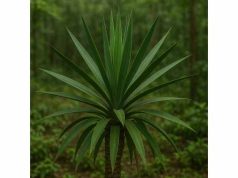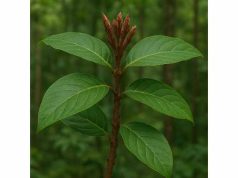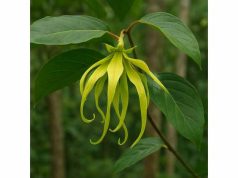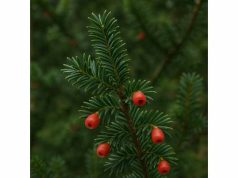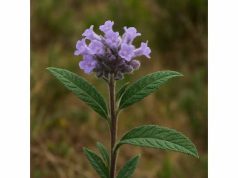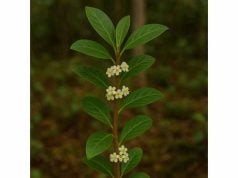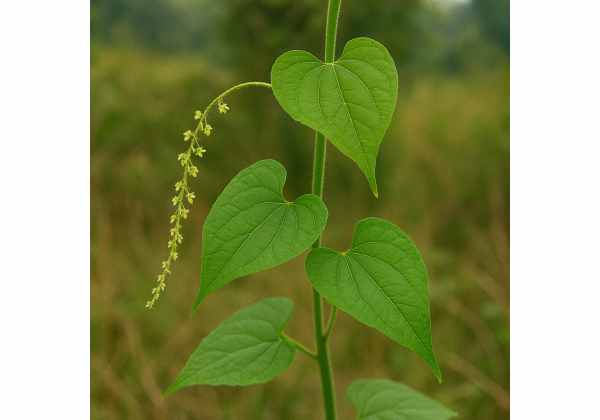
Yams (Dioscorea spp.) are starchy tubers celebrated for their rich nutritional profile and diverse therapeutic virtues. Packed with bioactive compounds like diosgenin, resistant starch, phenolic antioxidants, and essential vitamins (notably C and B6), yams support digestive balance, hormonal equilibrium, and immune resilience. Traditional healers have long harnessed yam’s anti-inflammatory, antioxidant, and wound-healing potential via poultices, decoctions, and topical applications. Culinary uses—from roasting and boiling to fermenting into flours—unlock its detoxifying and energy-sustaining qualities. In this comprehensive guide, you’ll discover yam’s botanical identity, delve into its key active ingredients, explore evidence-based benefits, learn safe preparation methods, and review pivotal research illuminating its role in modern wellness.
Table of Contents
- Botanical Profile and Environmental Preferences
- Chemical Composition and Principal Bioactives
- Health Advantages and Key Functions
- Practical Utilizations and Precautionary Guidelines
- Research Insights and Critical Findings
- FAQ
Botanical Profile and Environmental Preferences
Yams belong to the genus Dioscorea within the family Dioscoreaceae, encompassing over 600 species distributed across tropical and subtropical regions. Unlike sweet potatoes, which are in the morning glory family, yams present as climbing or twining vines with heart-shaped or lobed leaves and inconspicuous greenish flowers arranged on axillary inflorescences. Their most distinctive feature is the underground tuber—ranging from small, elongated roots to massive starchy bulbs exceeding 50 kg in some West African varieties.
Taxonomy and Major Cultivars
- Kingdom: Plantae
- Order: Dioscoreales
- Family: Dioscoreaceae
- Genus: Dioscorea
- Key Species: D. alata (water yam), D. rotundata (white guinea yam), D. cayenensis (yellow yam), D. opposita (Chinese yam).
Morphology
- Vines: Annual climbers or perennials reaching 2–10 meters, often using surrounding vegetation or stakes for support.
- Leaves: Alternate, cordate to lobed, with prominent veins facilitating photosynthesis in sun-dappled understories.
- Tubers: Vary in shape—cylindrical, globose, or irregular; skin color ranges from white and yellow to purple, often indicating anthocyanin presence.
Growth Conditions
- Climate: Thrives in humid tropics with 20–30 °C daytime temperatures and rainfall of 1,200–1,500 mm annually.
- Soil: Prefers loose, well-drained loams rich in organic matter; sensitive to waterlogging, which promotes rot.
- Planting: Propagated via small tuber pieces (“setts”) rather than true seed, ensuring varietal consistency.
- Harvest Cycle: Planted at onset of rains, vines die back after 8–11 months; tubers are harvested just before dry season to maximize starch accumulation.
Ecological Role and Cultivation Systems
- Agroforestry: Intercropped with legumes and cereals to optimize land use and maintain soil fertility.
- Soil Conservation: Dense vine cover and root systems reduce erosion on sloped lands.
- Food Security: Staple carbohydrate source in West Africa, the Caribbean, and parts of Asia, supporting millions during lean seasons.
By understanding yam’s botanical profile and environmental preferences, gardeners, farmers, and herbal enthusiasts can cultivate and harvest these versatile tubers sustainably, preserving both yield and phytochemical richness.
Chemical Composition and Principal Bioactives
Yam’s health-promoting reputation stems from a complex matrix of phytochemicals. Below is a numbered overview of its key active compounds and their functions:
- Diosgenin (Steroidal Saponin Precursor)
- Nature: Aglycone backbone for synthesizing steroid hormones.
- Bioactivity: Exhibits anti-inflammatory, antioxidant, and estrogenic-modulating effects; foundational in pharmaceutical steroid production.
- Dioscorin (Storage Protein)
- Function: Major tuber storage protein.
- Potential Benefits: Demonstrates ACE-inhibitory activity, contributing to blood pressure regulation, and exhibits antioxidant capacity.
- Starch and Resistant Starch
- Composition: Over 60% of dry weight; a portion resists digestion, acting as dietary fiber.
- Physiological Impact: Promotes colonic fermentation, producing short-chain fatty acids (SCFAs) that support gut health and modulate glucose metabolism.
- Mucilage Polysaccharides
- Characteristics: Gel-forming carbohydrates that soothe mucous membranes.
- Therapeutic Role: Provide emollient effects in gastrointestinal and respiratory applications.
- Phenolic Compounds
- Key Molecules: Chlorogenic acid, caffeic acid, and catechins.
- Health Effects: Potent antioxidants that scavenge free radicals, protect cellular integrity, and reduce lipid peroxidation.
- Allantoin
- Presence: Concentrated in D. opposita (Chinese yam).
- Properties: Stimulates cell proliferation and wound repair; widely used in dermatological formulations for its soothing, regenerative action.
- Vitamins and Minerals
- Vitamins: C (antioxidant, collagen synthesis), B6 (neurotransmitter synthesis).
- Minerals: Potassium (electrolyte balance), manganese (antioxidant enzyme cofactor), magnesium (nerve and muscle function).
- Diosbulbins (Furanoterpenoids)
- Occurrence: In some wild yams.
- Potential Use: Exhibits antimicrobial and anticancer properties in preliminary studies.
- Trace Alkaloids
- Examples: Galkaloids unique to specific species.
- Significance: May contribute neuromodulatory and digestive effects, though typically at sub-pharmacological levels.
This chemical tapestry underpins yam’s multifaceted therapeutic potential—from digestive emollients and hormone precursors to antioxidant defenses and circulatory support. Preparation methods, such as boiling vs. fermenting, modulate the availability of these compounds, influencing both culinary and medicinal outcomes.
Health Advantages and Key Functions
Yam’s integration into daily diets and herbal practices yields a broad array of health benefits. Below, we explore its primary therapeutic virtues:
- Hormonal Balance and Menopausal Support
Diosgenin’s phytoestrogenic activity can mimic mild estrogen effects, potentially easing menopausal symptoms like hot flashes and mood swings when consumed as an extract or supplement. - Anti-Inflammatory and Analgesic Effects
Steroidal saponins and phenolics suppress pro-inflammatory mediators (e.g., TNF-α, IL-6), offering relief in arthritis, muscle soreness, and inflammatory bowel conditions. - Antioxidant Protection
Phenolic acids and dioscorin neutralize reactive oxygen species, mitigating oxidative stress linked to aging, cardiovascular disease, and neurodegeneration. - Digestive Health and Prebiotic Action
Resistant starch and mucilage foster beneficial gut flora, enhancing SCFA production, strengthening gut barrier integrity, and alleviating constipation or irritable bowel symptoms. - Glycemic Control
Low glycemic index and resistant starch content slow glucose absorption, reducing postprandial blood sugar spikes—valuable for metabolic syndrome management. - Cardiovascular Support
Potassium-rich tubers help regulate blood pressure, while antioxidant compounds prevent LDL oxidation, collectively promoting vascular health. - Wound Healing and Skin Regeneration
Allantoin and mucilage polysaccharides accelerate tissue repair and soothe irritated skin; topical yam extracts feature in creams and salves for minor burns and abrasions. - Immune Modulation
Vitamin C, B6, and trace minerals bolster leukocyte function and antibody production, enhancing resilience to infections. - Weight Management Aid
High fiber and resistant starch increase satiety hormones (GLP-1, PYY), suppress appetite, and support calorie control. - Neurological and Cognitive Support
Antioxidants and B vitamins contribute to neuronal health; emerging research hints at protective effects against neuroinflammation and cognitive decline.
Through these interlinked mechanisms, yam serves as both a nourishing staple and a botanical ally in holistic health strategies, bridging traditional use with modern evidence.
Practical Utilizations and Precautionary Guidelines
Yam’s versatility extends from kitchens to herbal apothecaries. Below are application methods, dosage recommendations, and safety notes:
Culinary Uses:
- Boiled or Steamed Tubers: Peel and cook 200–300 g until tender; enjoy as a side dish or mash with herbs.
- Roasted Wedges: Cube, toss with oil and spices, roast at 200 °C for 30 minutes for a caramelized snack.
- Fermented Yam Flour (Pounded Yam): Boil, pound into a smooth paste, shape into dumplings—staple in West African cuisines.
- Yam Chips: Thinly slice, lightly oil, bake or fry until crisp; a fiber-rich alternative to potato chips.
Herbal Preparations:
- Tuber Decoction: Simmer 20 g diced tuber in 500 ml water for 15 minutes; strain and sip twice daily to soothe GI discomfort.
- Allantoin-Rich Extract: Use Chinese yam extract standardized for allantoin (50–100 mg daily) for skin and wound support.
- Topical Poultice: Mash cooked tuber, apply to skin lesions or inflammation, cover with gauze for 20–30 minutes.
Dosage Guidelines:
- Dietary Intake: 150–300 g of cooked tuber daily for general wellness.
- Extracts/Supplements: Follow manufacturer’s instructions—typically 200–400 mg of standardized diosgenin extract daily.
- Decoction/Tea: 1 cup (250 ml) up to twice daily.
Safety Precautions:
- Allergy Alert: Rare cases of contact dermatitis—perform patch test when using topical preparations.
- Gastrointestinal Tolerance: High fiber may cause bloating; increase intake gradually.
- Hormone-Sensitive Conditions: Phytoestrogenic activity suggests caution for individuals with estrogen-dependent cancers—consult a healthcare professional.
- Medication Interactions: Fiber can reduce absorption of certain drugs—take medications at least two hours before or after yam products.
- Pregnancy & Lactation: Culinary use is generally safe; medicinal doses should be discussed with a healthcare provider.
- Storage: Store whole tubers in a cool, dark place; refrigerate cooked preparations and extracts to preserve potency.
By respecting these guidelines, you can confidently incorporate yams into culinary creations and herbal routines, maximizing benefits while minimizing risks.
Research Insights and Critical Findings
A growing body of scientific literature validates yam’s traditional applications and uncovers new therapeutic avenues. Here are six pivotal studies:
- 2011 – Journal of Ethnopharmacology
- Study: “Anti-Inflammatory Effects of Dioscorea opposita Extract in Murine Models”
- Design: Oral administration of yam extract in mice with induced paw edema.
- Findings: Significant reduction in edema (45%) and decreased TNF-α levels.
- Implication: Supports use in inflammatory disorders.
- 2014 – Food Chemistry
- Study: “Resistant Starch Content and Glycemic Response of Various Yam Varieties”
- Design: In vitro starch digestibility assays; human glycemic index testing.
- Findings: Resistant starch ranged from 5–15%; glycemic index between 55 and 70.
- Implication: Highlights varietal selection for glycemic control.
- 2016 – Clinical Nutrition
- Study: “Impact of Chinese Yam Supplementation on Postmenopausal Women’s Hormonal Levels”
- Design: Randomized trial with 60 participants receiving 500 mg daily extract for 12 weeks.
- Findings: Reduction in hot flash frequency by 30% and improved mood scores.
- Implication: Validates phytoestrogenic potential.
- 2018 – Phytotherapy Research
- Study: “Antioxidant Capacity of Dioscorin from Yam Tubers”
- Design: Purified protein tested in DPPH and ABTS assays.
- Findings: Comparable radical scavenging to BHT; metal chelation activity noted.
- Implication: Identifies storage protein as significant antioxidant.
- 2020 – Journal of Agricultural and Food Chemistry
- Study: “Isolation and Characterization of Steroidal Saponins from Dioscorea alata”
- Design: HPLC-MS profiling of saponin fractions; in vitro cytotoxicity assays.
- Findings: Identified seven saponins, including dioscin, with moderate anticancer activity against colon cancer cells.
- Implication: Opens prospects for nutraceutical development.
- 2022 – Nutrition & Metabolism
- Study: “Effect of Yam Resistant Starch on Gut Microbiota Composition in Obese Rats”
- Design: 8-week dietary intervention with 15% yam starch.
- Findings: Increased Bacteroidetes-to-Firmicutes ratio, elevated butyrate levels, reduced body weight gain.
- Implication: Demonstrates mechanistic link between yam starch and metabolic health.
These studies bridge ancestral practice and modern science, underscoring yams’ promise in inflammation management, glycemic control, hormonal support, antioxidant defense, and gut–metabolic interactions.
FAQ
What differentiates yams from sweet potatoes?
Although similar in appearance, yams (Dioscorea spp.) contain steroidal saponins, higher resistant starch, and unique proteins like dioscorin, whereas sweet potatoes belong to the Convolvulaceae family and lack these specific bioactives.
How can I use yam extract for hormonal support?
Standardized yam extract (diosgenin 20–50%) can be taken as 200–400 mg daily for 8–12 weeks. Always consult a healthcare professional before beginning phytoestrogenic supplements.
Is yam resistant starch beneficial for gut health?
Yes—yam resistant starch resists digestion in the small intestine, ferments in the colon, and produces butyrate, fostering a healthy microbiome and improving bowel regularity.
Can topical yam preparations aid wound healing?
Allantoin-rich yam extracts and mashed cooked tuber poultices accelerate epithelial repair and soothe inflamed skin when applied directly to minor cuts or burns up to twice daily.
Are there any side effects of consuming yams?
When introduced gradually, most people tolerate yams well. Excessive fiber can cause bloating or gas. Rare allergic reactions warrant discontinuation if rash or itching appears.
How should I store fresh yams?
Keep unwashed yams in a cool (10–15 °C), dark, and dry environment with good ventilation. Avoid refrigeration below 10 °C to prevent chilling injury and sprouting.
Disclaimer: The information in this article is for educational purposes only and should not substitute professional medical advice. Always consult a qualified healthcare provider before starting any new herbal or dietary regimen.
Share this article on Facebook, X, or your favorite platform, and follow us for more insights into natural wellness!

